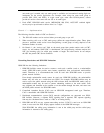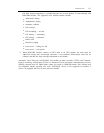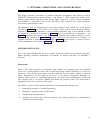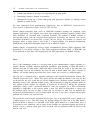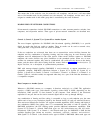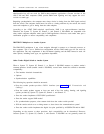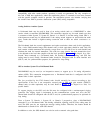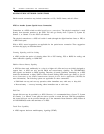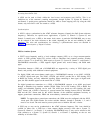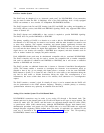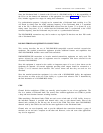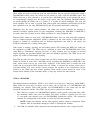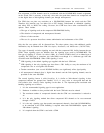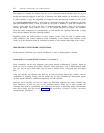
NETWORK CONNECTIONS AND CONFIGURATIONS
2-5
compatibility with other vendor products, operation is usually not guaranteed. The only exception to
this rule is DMI host applications, where the certification process is assumed to have been executed
with the specific computer vendor in question. The certification process also includes verifying that
the vendor’s host DMI is premises distribution system (PDS) wiring compatible.
Analog Switch to Another System
A D4-channel bank may be used in front of an analog switch (such as a DIMENSION
®
or other
vendor switch) to terminate DS1/DMI-BOS. This connection supports any tie trunk (trunk type) that
is common to either System 75, System 85, Generic 1, or Generic 2, and the analog switch (that is, a
wink-in/auto-out trunk may be administered if the analog switch supports an auto-in/wink-out trunk
type). Trunks that include a digital-to-analog conversion such as these are called combination tie
trunks.
The D4-channel bank has several requirements and option restrictions when used for this application.
First, 4-wire E&M extended range (ER) channel units (or their equivalent) should be used. Only ER
units contain variable attenuators that provide a range from 0 to 25.5 dB of loss in each direction and
eliminate the need for external attenuators. This wide loss range permits the trunk transmission level
to be adjusted to the level that complies with the level specified in chapter 4, The Digital Loss Plan.
Second, when connected to a D4-channel bank, D4 framing, robbed-bit signaling, and ZCS line
coding must be used. Finally, D4-channel banks should be configured with an office interface unit
(OIU-2) and, for synchronization purposes, be optioned for loop timing.
OPS to Another System Via a D4-Channel Bank
DS1/DMI-BOS may be used (as an inexpensive means) to support up to 24 analog off-premises
stations (OPS). This connection arrangement uses a D4-channel bank that is configured with FXS
channel units or their equivalent.
The loss provided by the FXS channel units should normally be correct according to the
specifications. If the loss is not acceptable, external pads or FXS with gain transfer (FXS/GT)
channel units (or their equivalent) may be used. Refer to chapter 4, The Digital Loss Plan, for
specific details.
To support ringing at the OPS end, the D4 must be configured with a noninterrupted ringing
generator. The ringing signal is interrupted by the communications system end. Also, the D4-
channel bank should be configured with an OIU-2 and, for synchronization purposes, be optioned for
loop timing.
From a System 75, Generic 1, System 85, or Generic 2 perspective, since a DS1/DMI-BOS
connection is to a D4-channel bank, D4 framing, robbed-bit signaling, and ZCS line coding must be
used. The OPS ports do not support the message waiting feature. Therefore, the feature should be
administered as turned-off for each OPS channel.
In addition to voice, the OPS channels can also be used to transmit voice-grade data.



